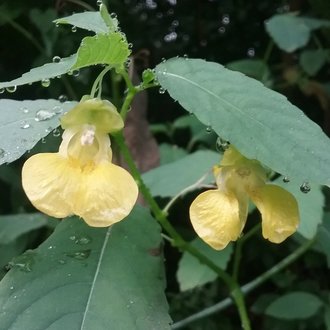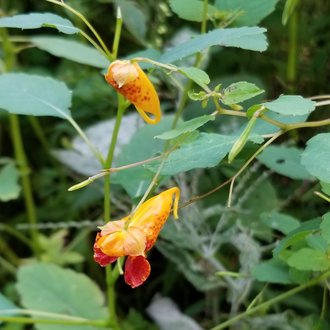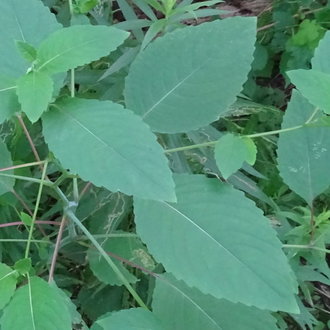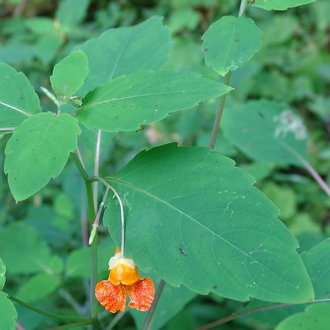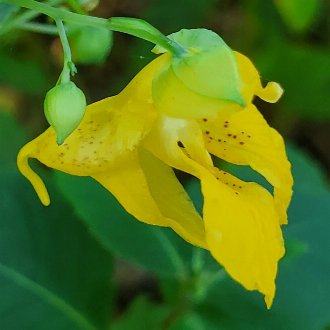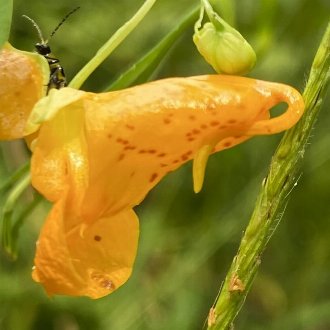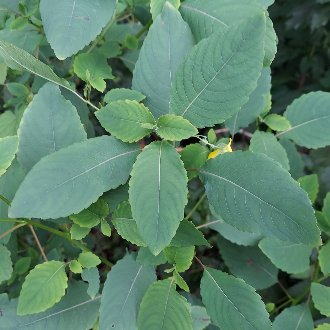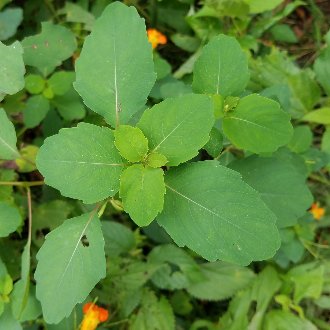Pale Touch-Me-Not vs Jewelweed
These similar species are usually easily told apart by bloom color and examination of the spurs on each flower. With difficulty, they can be reliably distinguished by leaf characteristics. ID can sometimes be challenging as all of these traits are variable and some individuals may have one or more characteristics outside the typical range for its species. Although they can occur together in the same habitat, Impatiens pallida ranges into slightly drier conditions and tolerates soil with less organic matter, but requires more nitrogen and phosphorus. Impatiens capensis is usually more common, and also ranges farther in all directions; it is also more tolerant of acidic soils. Although they overlap greatly in height, Impatiens pallida is more likely to be taller (to 6 ft vs. 5.)
Pale Touch-Me-Not (Impatiens pallida) | Jewelweed (Impatiens capensis) |
A yellow-flowering annual native to eastern North America, preferring wet areas. | An annual of wet areas, native to North America. |
Flowers are yellow and average much paler. Photo © Mary Crickmore, Public Domain. | Flowers are a richer orange and red, rarely yellow. Photo © rlammann, Public Domain. |
Leaf margins have more, finer serrations. Photo © Reuven Martin, Public Domain. | Leaf margins have fewer, coarser serrations. Photo © Reuven Martin, Public Domain. |
Spur at the back of each flower is shorter and usually not as curved back, rarely touches the rest of the flower, never or almost never forms a loop. Photo © ii Sips, CC BY 4.0. | Spur at the back of each flower is longer and more strongly curved back, often touching the rest of the flower, sometimes even forming a loop. Photo © Emily Summerbell, CC BY 4.0. |
Foliage always glaucous, appearing pale and bluish, averaging more intensely so of the two species. Photo © the swamp ass, CC BY 4.0. | Often but not always glaucous. Foliage averages slightly more yellowish and slightly deeper green. Photo © Leila Dasher, CC BY 4.0. |
References & External Resources
These short lists show only links helpful for ID. For a complete list of references and resources also covering other aspects of ecology, visit the links section of the full article on each plant, which is the first entry here.



